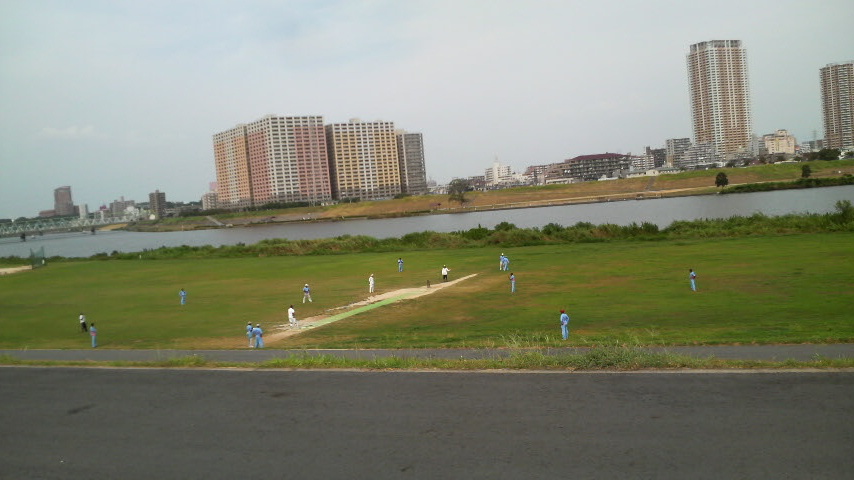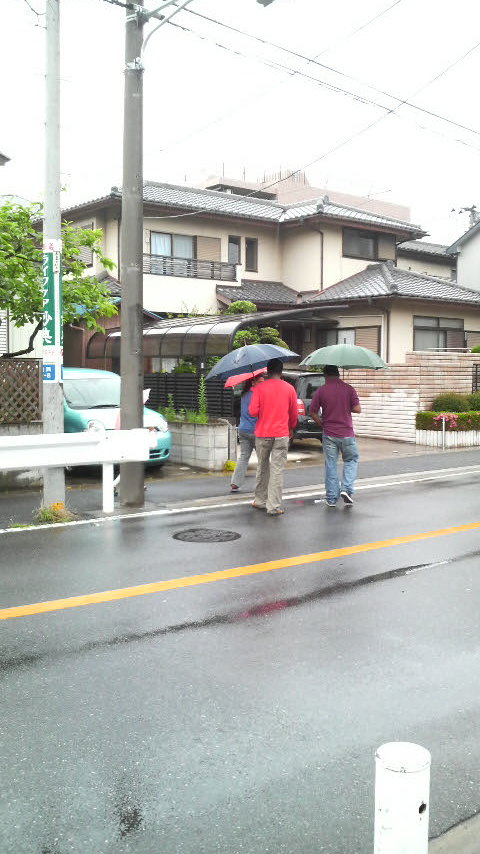 |
| Indian cricket game on the bank of the Edogawa River, facing Ichikawa City, surrounded by baseball fields. |
 |
| Myoden, a quiet suburban region near Urayasu in Chiba Prefecture, boasts a large Indian community, as well as an Indian kindergarten. |
Roughly two months after, in February 2008, I returned to Koenji to see Umesh -- it was a truly brutal Sunday afternoon, wind blowing a gale and cold as hell. Things looked warmer in Koenji's PAL Arcade however, with curry shops all over the place, and the atmosphere positively screaming Little India, as the Japanese "king of subculture" Jyun Miura once observed. Umesh made some steaming food and we cracked open a few bottles of beer, ice cold of course. It was cricket season down Under, and Umesh was following the action in the India vs Australia One Day game at the SCG -- not on TV or radio or online TV, but rather watching a text feed updated delivery by delivery, over by over, over the computer. It was like watching a scoreboard -- changes in the numbers denoted action, a leg-bye here, a boundary there. About as far from high fidelity as you can imagine, but at least it was live (real time), and it was in its own way, absolutely riveting (admittedly, it was an unusually exciting match.) Umesh was barracking for the Indians, and I was barracking for the Aussies, and we were drinking big bottles of Asahi beer, and downing a range of Nepali treats. There was no picture and there was no sound, but we had the power of imagination (the world's first Virtual Reality.) In my mind's eye I see it all: the Indians rallying valiantly, in the closing overs, to reach Australia's 7/317 (they were eventually dismissed for 299.)
We had no audio, but you didn't need ears to hear the taunts which must have belched from the stands at the Sydney Cricket Ground every time an Indian tail-enders put bat on ball, and darted up to the other end of the wicket. You could feel the tension in the air, as the old cliche goes, even this far away, in wintry Japan... the atmosphere was boiling over. At home in Australia, I could well imagine my Dad cursing at the TV and perhaps even launching the remote-con at the screen, once it dawned on him that India might have a chance of winning. But then Sharma was bowled out by Lee, and everything was golden again, Down Under. Rapturous cheers, and grinning commentators delivering their post-mortems. It was a vivid moment which proved to me that sometimes imagination outclasses technology; and the nearest memory it evoked, was listening to the action at Lords on shortwave radio, when I was about eight-years-old and living on the NSW Central Coast. Those were the days when books had better special effects, than the Hollywood recreations of them (I am thinking in particular of JRR Tolkien's The Lord of the Rings, or Baz Lurhmann's The Great Gatsby). The following night, at my singing job in Shinjuku, I related the story to my Kiwi coworker D. "It is a pity there is nowhere on the Internet you can watch the cricket live," I remarked. "But there is," D. said. "Why don't you try Sopcast? There is some Indian guy running it, feeding cable TV live on to the Net."
 |
| PAL Arcade in Koenji, the heart of Tokyo's "Little India". |

No comments:
Post a Comment